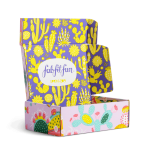In the world of tobacco products, few innovations have made as significant an impact as the humble flip-top cigarette box. This seemingly simple packaging solution has transformed how smokers carry, access, and experience their cigarettes for nearly a century. The distinctive click of the lid opening and closing has become as recognizable as the scent of tobacco itself, creating a sensory experience that transcends mere functionality.
The flip-top box first emerged in the 1930s as a revolutionary alternative to soft-pack packaging. Its rigid structure provided superior protection for delicate cigarettes, preventing them from being crushed in pockets or purses. The ingenious hinged lid design offered unprecedented convenience – no more fumbling with cellophane wrappers or struggling to extract cigarettes from flimsy packaging. This practical innovation quickly captured the market’s imagination, becoming the gold standard for cigarette packaging worldwide.
What makes the flip-top design so enduringly popular is its perfect balance of form and function. The sturdy cardboard construction maintains cigarette freshness while providing an excellent canvas for brand identification and graphic design. Tobacco companies quickly recognized the marketing potential, transforming these boxes into miniature billboards that communicate brand identity, quality, and lifestyle associations. The satisfying tactile experience of flipping open the lid and retrieving a cigarette has become an integral part of the smoking ritual for millions.
The psychological impact of flip-top packaging cannot be overstated. The distinctive sound of the box opening creates anticipation, while the orderly presentation of cigarettes in neat rows appeals to our desire for organization and control. Many smokers develop personal rituals around their flip-top boxes – tapping cigarettes before lighting, using the inner foil as a makeshift ashtray, or saving particularly artistic boxes as collectibles. These behaviors demonstrate how functional packaging can evolve into an essential component of personal habit and cultural practice.
From an environmental perspective, flip-top boxes present both challenges and opportunities. While the cardboard and foil materials are recyclable, the prevalence of this packaging contributes to litter concerns. However, many manufacturers are addressing these issues through sustainable sourcing and recycling initiatives. Some brands have even introduced biodegradable variants, showing how traditional packaging can adapt to modern environmental consciousness without sacrificing the convenience users have come to appreciate.
The future of flip-top cigarette boxes continues to evolve alongside changing regulations and consumer preferences. Modern iterations feature child-resistant mechanisms, graphic health warnings, and innovative materials while maintaining the classic functionality that made the original design so successful. As smoking rates decline in many developed countries, the flip-top box stands as a testament to packaging innovation that perfectly understood and served its users’ needs. Its legacy continues in how numerous other products – from mints to pharmaceuticals – have adopted similar hinged-lid designs.
Beyond practical considerations, flip-top cigarette boxes have embedded themselves in popular culture. They’ve appeared in countless films as character-defining props, been repurposed as storage containers for everything from sewing kits to fishing tackle, and inspired artistic creations. The iconic design has become so familiar that it’s instantly recognizable even when empty, serving as a canvas for everything from political statements to personal mementos in the hands of creative individuals.
While public health concerns surrounding tobacco continue to shape the industry, the flip-top cigarette box remains an impressive example of packaging design that perfectly marries utility with user experience. Its nearly century-long dominance in the market demonstrates how thoughtful design solutions can create lasting impact far beyond their initial purpose. The next time you hear that distinctive click of a flip-top box opening, remember that you’re witnessing a small piece of design history – one that revolutionized not just how we store cigarettes, but how we interact with everyday objects.




Leave a Message